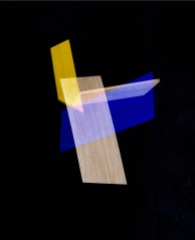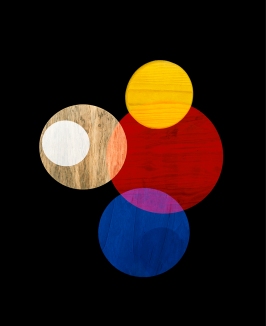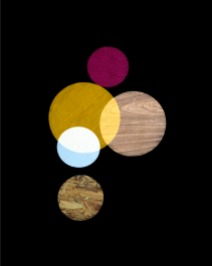
June’s featured photographer is Alejandra Laviada
Alejandra Laviada (b. 1980) lives and works in Mexico City. She completed her BFA in Painting at the Rhode Island School of Design and her MFA in Photography from the School of Visual Arts in New York. She is a member of the photography collective Piece of Cake since 2011.
Laviada’s work explores photography’s shifting role and relationship to other artistic media, such as; painting and sculpture. The images emerge from the intersections between these different mediums, and aim to question and redefine photography’s various roles within contemporary art.
Laviada’s photographs have received several awards including Photo España’s Descubrimientos Prize, First Prize at the Photography Biennial in Mexico, and the FONCA Young Creators grant. Her work has been exhibited widely and is in the permanent collection of the Houston Museum of Fine Arts, the Centro de la Imagen in Mexico City, the Bank of America Photography Collection, and the Fundación Televisa Collection.
Geometry of Space
These photographs are made through multiple exposures of a single negative without digital manipulation. Different objects are photographed as layers on top of each other to create spatial sculptural compositions. The geometric forms appear to be floating in space, and each layer of exposure reveals a unique play with transparency and perspective. The color comes from the use of filters, applying a different one for each photographic layer or exposure, and sometimes combining them to create a new color. There is inevitably an element of surprise in the work as the image reveals itself.
As with the rest of my work, these images lie at the intersection between painting, photography and sculpture. By composing and layering the images inside the camera, the photographic medium and process become like a painter’s blank canvas. The camera is, by nature, a representational device, but it can also abstract and reveal an alternate reality invisible to the naked eye. The multiple exposures allow me to play with the space, scale and vantage point of the objects, and reveal photography’s ability to construct an image that does not exist in reality, through traditional means and without digital intervention.
In thinking about what shapes to use as the building blocks for Geometry of Space, I re-examined Laszlo Moholy-Nagy’s paintings as a starting point for this work. I focused on his paintings of intersecting geometric planes suspended in space, and built various three dimensional wooden objects using the same proportions in various sizes. These then became the primary language for most of the images in Geometry of Space.
Being both a painter and a photographer, Moholy-Nagy’s approach to photography comes from a painterly perspective, and he believed that “the camera should be liberated from its role of recording the natural world in order to create abstract pictures of light and form”. Coming from a painting background myself, my photographic process also has its roots in painting and in finding ways of pushing photography’s boundaries in relation to other artistic mediums.
To learn more about Alejandra’s projects, here
La fotógrafa del mes de Junio es Alejandra Laviada
Alejandra Laviada (Ciudad de México, 1980) estudió Artes Plásticas en Rhode Island School of Design y una maestría en Fotografía en School of Visual Arts, en Nueva York. Desde 2011, es miembro del colectivo de fotografía Piece of Cake Collective.
Su trabajo explora la relación entre la fotografía y otras disciplinas artísticas, como la pintura y la escultura. Las imágenes surgen de las intersecciones que existen entre estas diferentes disciplinas, e investigan las diversas posibilidades del medio fotográfico dentro del contexto del arte contemporáneo.
La obra de Alejandra Laviada ha sido exhibida de manera individual y colectiva en México, Estados Unidos, y Europa, y ha recibido reconocimientos como el premio Descubrimientos en Photo España, y el primer lugar en la Bienal de Fotografía en Mexico. Su trabajo está en la colección permanente del Museum of Fine Arts, Houston, el Centro de la Imagen, la Fundación Televisa, y el Bank of America Photography Collection, entre otros.
Geometry of Space (Geometría del Espacio)
Estas fotografías se realizan a través de múltiples exposiciones de un solo negativo sin ningún tipo de manipulación digital. Diferentes objetos se fotografían como capas, una encima de la otra, para crear composiciones escultóricas espaciales. Las formas geométricas parecen estar flotando en el espacio, y cada capa de exposición revela un juego único con transparencia y perspectiva. El color proviene del uso de filtros, aplicando uno diferente para cada capa o exposición fotográfica, y algunas veces combinándolos para crear un nuevo color. Inevitablemente, hay un elemento de sorpresa en el trabajo a medida que la imagen se revela.
Al igual que con el resto de mi trabajo, estas imágenes se encuentran en la intersección entre pintura, fotografía y escultura. Al componer y colocar en capas las imágenes dentro de la cámara, el medio fotográfico y el proceso se convierten en el lienzo blanco de un pintor. La cámara es por naturaleza, un dispositivo de representación, pero también puede abstraer y revelar una realidad alternativa invisible a simple vista. Las exposiciones múltiples me permiten jugar con el espacio, la escala y la posición ventajosa de los objetos y revelar la capacidad de la fotografía para construir una imagen que no existe en la realidad, a través de medios tradicionales y sin intervención digital.
Al pensar en qué formas uso como bloques de construcción para Geometry of Space, reexaminé las pinturas de Laszlo Moholy-Nagy como punto de partida para este trabajo. Me centré en sus pinturas de intersecciones de planos geométricos suspendidos en el espacio, y construí varios objetos de madera tridimensionales utilizando las mismas proporciones en varios tamaños. Estos se convirtieron en el idioma principal de la mayoría de las imágenes en Geometry of Space.
Al ser tanto pintor como fotógrafo, el enfoque de Moholy-Nagy hacia la fotografía proviene de una perspectiva pictórica, y creía que “la cámara debería liberarse de su papel de grabar el mundo natural para crear imágenes abstractas de luz y forma”. Yo misma proveniente de un background de pintura, mi proceso fotográfico también representa sus raíces en la pintura y en encontrar formas de ampliar los límites de la fotografía en relación con otros medios artísticos.
Para saber más de los proyectos de Alejandra, aquí














